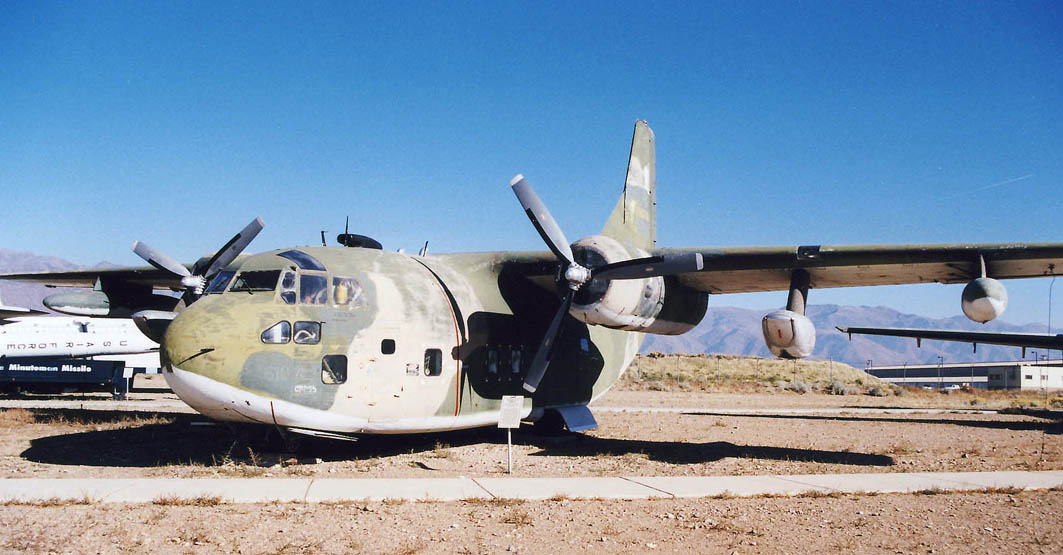
Fairchild C-123
 |
| C-123 Provider 54-0610 is preserved in USAF South East Asia markings at Hill Aerospace Museum, Utah |
| The Fairchild C-123 originated in 1943 in a heavy assault
cargo glider developed by the specially-formed Chase Aircraft Company
in the US. The XCG-18A led to five YCG-18A pre-production examples but no order was forthcoming with the end of World War II. One aircraft was converted to the YC-122 light transport with the addition of two radial engines and this was developed through YC-122A, B and C models. The US military then ordered two prototypes of a larger transport, the XCG-20 (later XG-20) glider, one of which became the XC-123 when powered by two 2,200hp Pratt and Whitney R-2800-23 Double Wasp 18-cylinder radial engines. This first flew on October 14, 1949. Chase received an order in 1952 for five pre-production C-123B Providers, which were delivered in 1953. Kaizer-Frazer Corporation took over the company and was awarded a contract for 300 C-123Bs but this was cancelled in 1953 and awarded to Fairchild, which then took over responsibility for development and production. The type could carry outsize cargo due to its rear loading ramp or 60 full-equipped troops. The first production aircraft flew on September 1, 1954, and Fairchild production totalled 302, including one static frame and 24 for Saudi Arabia and 18 for Venezuela. USAF surplus C-123Bs were later supplied to the Philippines, Taiwan and South Vietnam. Three experimental versions were built by the Stroukoff Aircraft Corporation. These included the YC-123D with a boundary layer control system and the YC-123E with a landing system that included water skis and wingtip floats. All future versions were conversions of C-123Bs, with a YC-123H trialling underwing 2,850lb General Electric J85 turbojets for greater take-off performance. This led to 123 aircraft being fitted with the engined as C-123Ks. Thirty-four aircraft became UC-123Ks with underwings spray bars to spread Agent Orange defoliant across Vietnam to reduce cover for the north's army during the Vietnam War. The type saw widespread service with the USAF in Vietnam and many remained with local air forces after the service retired its aircraft in the early 1970s. The Provider had a limited civil career, with a handful converted to freighters. Three were bought by TBM of California for conversion to water bombers but only one had a tank fitted and was only used for a few seasons before being retired. The type flies on with a handful of civil and historical operators in the US, the latter operating the aircraft in period Vietnam War colours. |
| Contents | Photos | Census | Update |